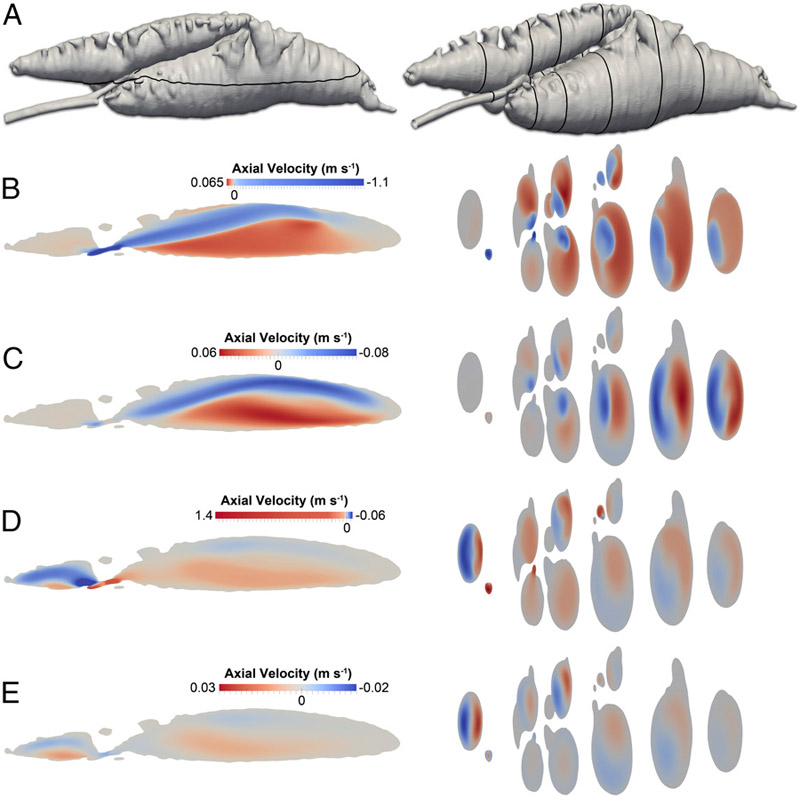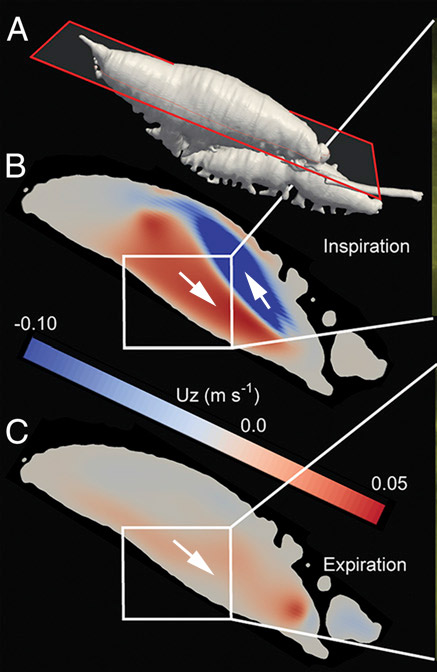Computational fluid dynamics (CFD) models are a powerful means of understanding structure-function relationships in the lungs. The members of the Farmer laboratory have been working with Dr. Brent Craven to develop CFD models for a range of different vertebrates to better understand patterns of airflow as well as to understand lung evolution. Our approach is to generate a high fidelity computational mesh from computed tomography data using a hexahedral-dominant, unstructured, open source mesh generation utility, snappy-HexMesh, from the computational continuum mechanics library, OpenFOAM. CFD simulation of airflow is carried out using the segregated pressure-based PIMPLE (hyrid PISO/SIMPLE) algorithm, also available in OpenFOAM, to solve the time-accurate, incompressible continuity and Navier-Stokes equations. |

